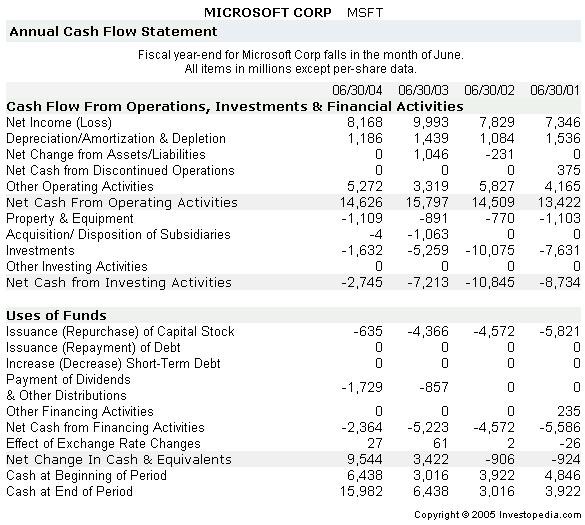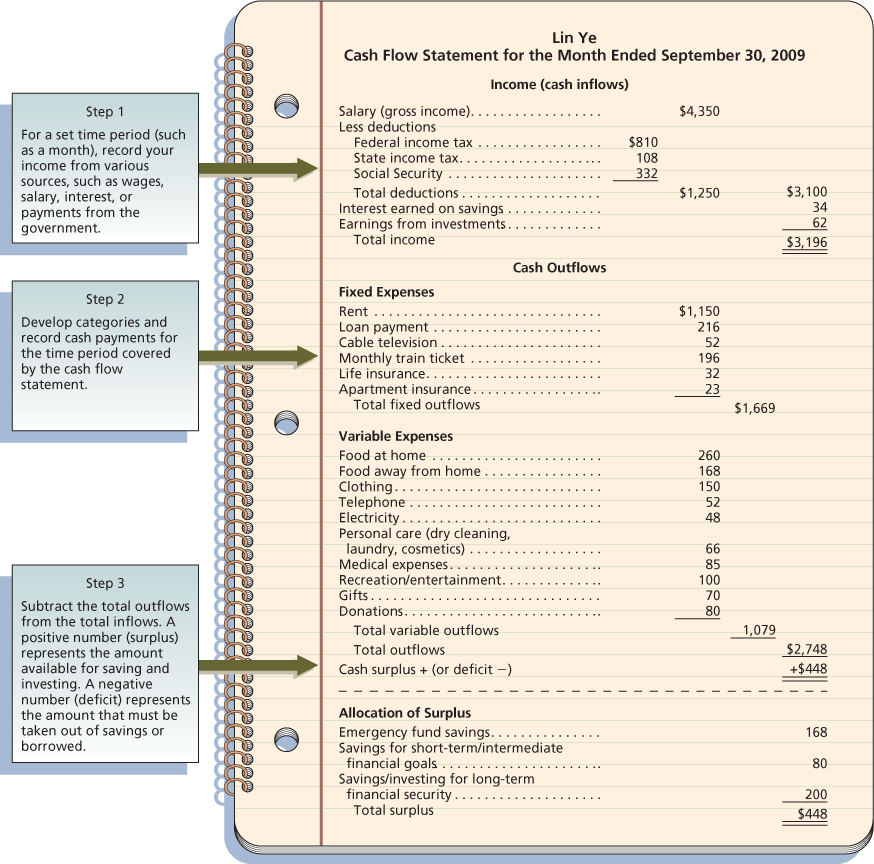Create a Personal Cash Flow Statement
Post on: 11 Апрель, 2015 No Comment

There are many ways to measure your financial health. The measurement that probably gets the most attention from personal finance books and news outlets is the personal balance sheet, or net worth statement. Knowing your net worth can be important, but keep in mind that it is a snapshot in time and not necessarily a true indicator of financial health. There are many other factors that affect your financial health, one of which is your cash flow statement, which is a representation of your net monthly cash flow.
You can use your cash flow statement in conjunction with your net worth statement to get a better idea of your overall financial health. Later we will show you how to combine your net worth statement and cash flow statement with a financial risk test and debt analysis which will help you get a more clear picture of your financial health.
Why positive cash flow is important
One of the fundamental building blocks of becoming wealthy is spending less than you earn. It is one of the core concepts of achieving wealth. Your cash flow statement wont tell you if you will become a millionaire or not, but it can tell you if you are on the right path hint: you cant build wealth if you are running on a deficit.
How to Create a Personal Cash Flow Statement
Creating a cash flow statement may remind you of creating a budget. You will need to record all sources of income and all your expenses. Then you will add the final amounts for income and expenses. Just like your net worth statement, a positive number is positive cash flow (good!) and a negative number is negative cash flow (bad!).
Factors to Consider in Personal Cash Flow Statement
A cash flow statement is designed to list all sources of income that affect your cash flow, not just your salary from your day job. Below this section is a list of income streams to consider adding to your cash flow statement. However, you should only add the income sources that are available for spending. For example, investment income and dividends are listed as forms of income, but you wouldnt list those on your cash flow statement if they are in retirement accounts or are automatically reinvested.

On the same token, you need to record all expenses, including regular and irregular expenses. For example, some of your expenses may come quarterly, semi-annually, or annually. You may wish to break those down into a monthly approximation (examples could include insurance premiums, taxes, homeowners association fees, investment contributions, etc.). Groceries and utilities are also expenses that can be approximated to smooth out your cash flow statement.
The following is a list of income sources and expenses that you may wish to include in your personal cash flow statement. You will need to tailor it to your needs.
Income
Earned Income
- Salary 1
- Salary 2
- Bonuses/tips/commissions














